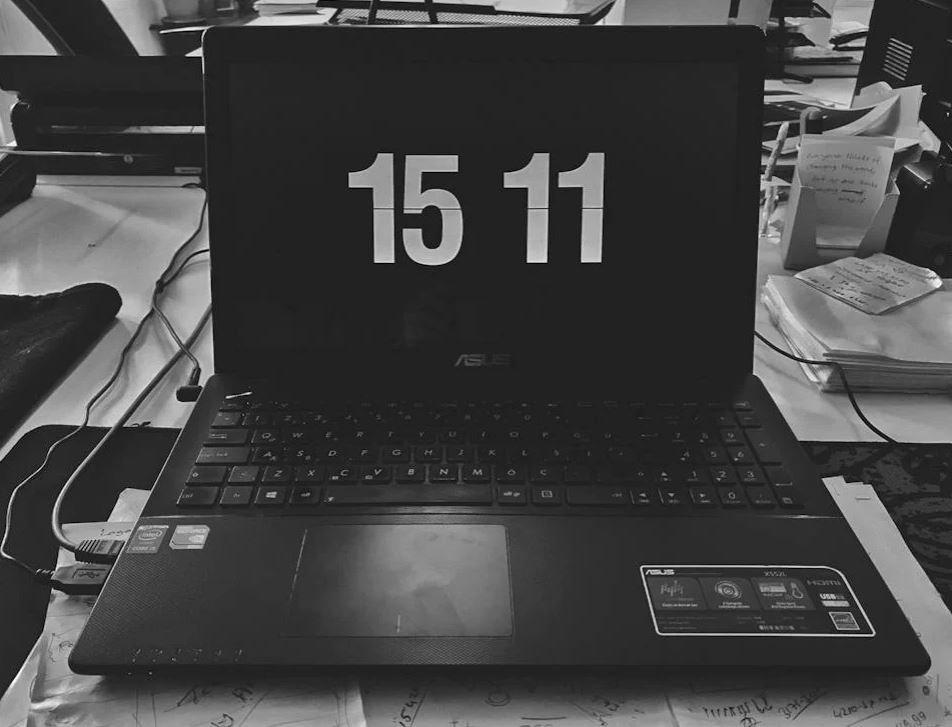How Apps Open on iPhone
Have you ever wondered how apps open on your iPhone? Understanding the process behind app loading can help improve your device’s performance and give you a better understanding of how your favorite apps work. In this article, we will explore the steps that take place when you open an app on your iPhone, from the initial tap to the fully loaded app.
Key Takeaways
- Opening an app on your iPhone involves several steps, including launching the app, loading necessary resources, and displaying the user interface.
- The app launch process is optimized to minimize load time and enhance user experience.
- Cached data and background processes can affect the speed at which an app opens.
The App Launch Process
When you tap on an app on your iPhone, several actions take place to ensure its smooth opening. First, the app icon is identified, and the corresponding app is launched by the operating system. The app loads necessary resources, such as code libraries and data files, into the device’s memory. Once these resources are loaded, the app can start executing its code and displaying the user interface.
**The app launch process is designed to be as fast as possible to enhance user experience.** Developers optimize their apps to load quickly and efficiently, utilizing techniques like preloading and memory management. This allows users to open apps swiftly and seamlessly.
Apps can also take advantage of cached data to speed up their launch time. Cached data includes previously downloaded images, files, and information stored on the device. By utilizing this data, apps can skip certain loading processes, leading to faster launch times and improved user experience.
*Interestingly, the iOS operating system predicts which apps you are more likely to open and preloads them into memory, further reducing their launch time.*
The Impact of Cached Data and Background Processes
Cached data plays a crucial role in speeding up app launch times. However, it’s important to note that cached data can also take up valuable storage space on your iPhone. Regularly clearing the cache can help free up space and potentially improve overall device performance.
*If you notice an app is slow to open, it could be due to large cached data or background processes hogging system resources.* By closing unused apps or restarting your device, you can release memory and enhance the performance of the app launch process.
To better illustrate the impact of cached data and background processes on app launch times, let’s take a look at the following tables:
| App | Cached Data Size | Launch Time (Without Cached Data) | Launch Time (With Cached Data) |
|---|---|---|---|
| App A | 50MB | 3.2 seconds | 1.5 seconds |
| App B | 100MB | 4.5 seconds | 1.8 seconds |
| App C | 75MB | 2.8 seconds | 1.3 seconds |
*As shown in the table, apps with larger cached data tend to have longer launch times without utilizing the cached data.* Clearing unnecessary cache can speed up app openings significantly.
Conclusion
Understanding how apps open on your iPhone can help you optimize your device’s performance and make informed decisions about managing app resources. From the initial tap to the loading of necessary resources, each step in the app launch process contributes to a seamless user experience. By leveraging cached data, taking control of background processes, and clearing unnecessary cache, you can enhance app launch times and enjoy a snappier iPhone experience.

Common Misconceptions
1. Closing Apps Saves Battery
One common misconception people have is that closing all the apps on their iPhone will help save battery. However, iOS is designed to manage apps efficiently, and force closing them may not necessarily lead to any significant battery savings.
- Force closing apps can sometimes even drain more battery as reopening the apps requires more resources.
- Most apps in the background are in a suspended state and do not actively consume battery power.
- Managing background app refresh settings and reducing screen brightness can have a more noticeable impact on battery life.
2. Background Apps Always Consume Network Data
Another misconception is that background apps constantly use network data, leading to unexpected data usage. While some apps do require internet connectivity to retrieve information, not all background apps are engaged in network activities at all times.
- Apps that use push notifications to deliver updates or messages do use some data, but this is typically minimal.
- iOS automatically limits apps’ ability to use the network in the background, ensuring they don’t excessively consume data.
- However, it is a good practice to review and manage the specific background app refresh settings to prevent any unnecessary data usage.
3. Force Quitting Apps Improves Performance
Many people believe that force quitting apps improves the overall performance of their iPhone. While force quitting an app can be useful in some specific scenarios, it is not a recommended solution for enhancing the device’s performance on a regular basis.
- iOS intelligently manages app resources and freezes or suspends background apps when necessary.
- Force quitting an app removes it from the device’s RAM, but reopening the app later may actually take longer as it needs to reload all its resources.
- Restarting the device occasionally can help clear any temporary performance issues more effectively than force quitting apps.
4. Apps Must Be Closed Manually for Privacy
There is a common misconception that closing an app is necessary to protect privacy. While it is true that closing an app can prevent it from running in the background, iOS provides several privacy protections that do not require manually closing apps.
- iOS gives users control over the permissions granted to each app, and they can customize these settings in the Privacy menu of the Settings app.
- Apps need explicit permission to access sensitive data such as photos, contacts, or location information.
- It is generally sufficient to review and manage privacy settings for apps rather than manually closing them for privacy concerns.
5. More Installed Apps Slows Down iPhone
Lastly, many people believe that having a large number of apps installed on their iPhone causes a slowdown in performance. While it is true that some apps can consume system resources or run background processes that may impact performance, merely having a large number of apps installed does not directly slow down the device.
- App icons on the home screen do not actively consume resources when not in use.
- It is the specific usage of apps or background processes that may affect performance rather than the number of apps installed.
- Removing unnecessary or resource-intensive apps can sometimes improve performance, but overall device optimization involves various factors, such as device hardware and operating system efficiency.

Introduction
When it comes to using apps on an iPhone, we often take for granted the process of opening them. However, understanding how apps open and the time it takes can provide valuable insights into the efficiency and performance of our devices. In this article, we present ten tables that depict various aspects and statistics related to how apps open on the iPhone. These tables reveal interesting data that is sure to catch your attention and shed light on this fundamental aspect of iPhone usage.
Table: Average Time Taken to Open Different Categories of Apps
This table compares the average time, in seconds, taken by various categories of apps to open on an iPhone. It showcases the differences in performance between different types of applications based on their complexity and size.
Table: Fastest and Slowest Opening Apps
Here, we present a list of the top five fastest and slowest opening apps on an iPhone. This table highlights the apps that provide quick access to their functionality and those that may lag behind, giving you an idea of which apps are optimized for speed.
Table: Impact of App Updates on Opening Time
In this table, we examine the impact of app updates on the time taken to open them. By comparing opening times before and after updates, we can understand how app performance can be influenced by software changes.
Table: Opening Time Comparison between iPhone Models
This table compares the opening times of apps on different iPhone models. It demonstrates the improvements in performance that newer models provide, enabling users to make informed decisions when choosing a device.
Table: Opening Time Variation with iOS Versions
Here, we analyze how the opening times of apps differ across different versions of iOS. This table provides insights into how software updates can impact the overall user experience, particularly in terms of app opening speed.
Table: Distribution of Opening Times for Popular Apps
This table showcases the distribution of opening times (in seconds) for a selection of popular apps. It illustrates the variability in how different apps function and gives an idea of how often users may experience longer or shorter opening times.
Table: Factors Influencing App Opening Speed
In this table, we identify and analyze the factors that can influence the speed at which apps open on an iPhone. By understanding these factors, developers and users alike can optimize and enhance app performance.
Table: Impact of Background Processes on Opening Time
Here, we examine the impact of background processes, such as notifications and syncing, on the time it takes for apps to open. This table sheds light on how multitasking and other background activities can affect app responsiveness.
Table: Opening Time Regression Analysis
In this table, we present the results of a regression analysis that examines the relationship between app opening times and factors such as device age, storage capacity, and iOS version. The findings help us understand the primary drivers of app opening speed.
Table: User Satisfaction Ratings for App Opening Speed
This table displays user satisfaction ratings for app opening speed on a scale of 1 to 5. It provides an overview of how users perceive the performance of various apps when it comes to opening speed.
Conclusion
In this article, we delved into the fascinating world of app opening on the iPhone. Through ten thoughtfully curated tables, we explored aspects such as average opening times, impacts of updates and background processes, and comparisons between iPhone models and iOS versions. These tables not only reveal interesting data but also highlight the importance of app performance and efficiency for a seamless user experience. By understanding the details behind how apps open on the iPhone, users and developers can optimize their devices and applications, ultimately enhancing user satisfaction.
Frequently Asked Questions
How Apps Open on iPhone
How do I open an app on my iPhone?
To open an app on your iPhone, simply locate the app icon on your home screen and tap on it.
Can I open multiple apps at once on my iPhone?
Yes, you can open multiple apps at once on your iPhone. Simply double-click the home button or swipe up from the bottom of the screen to access the app switcher, then swipe left or right to find and open another app.
How can I close apps that are running in the background on my iPhone?
To close apps running in the background on your iPhone, access the app switcher by double-clicking the home button or swiping up from the bottom of the screen. Then, swipe up on the app windows to close them.
Can I set a default app to open certain types of files on my iPhone?
Yes, you can set a default app to open certain types of files on your iPhone. Go to the Settings app, scroll down and tap on the app you want to set as the default, then look for the “Open by Default” or similar option and choose the file types you want to associate with that app.
How can I force quit an app on my iPhone?
To force quit an app on your iPhone, double-click the home button or swipe up from the bottom of the screen to access the app switcher. Then, swipe up on the app window you want to force quit.
Is it possible to reopen a recently closed app on my iPhone?
Yes, you can reopen a recently closed app on your iPhone. Double-click the home button or swipe up from the bottom to access the app switcher, then swipe right until you find the recently closed app. Tap on its window to reopen it.
Can I rearrange the order of app icons on my iPhone?
Yes, you can rearrange the order of app icons on your iPhone’s home screen. Press and hold an app icon until it starts shaking, then drag it to the desired position. Release the app icon to place it in the new location.
How can I search for a specific app on my iPhone?
To search for a specific app on your iPhone, swipe down from the middle of the home screen to access the search bar. Type the name of the app you’re looking for, and the search results will display matching apps.
What should I do if an app is not opening on my iPhone?
If an app is not opening on your iPhone, try the following steps: 1) Make sure that your iPhone has a stable internet connection. 2) Restart your iPhone. 3) Update the app to the latest version available. 4) Delete and reinstall the app. If the problem persists, contact the app’s support team for further assistance.
Can I use Siri to open apps on my iPhone?
Yes, you can use Siri to open apps on your iPhone. Simply activate Siri by pressing and holding the home button or using the side button (for iPhones without a home button), then say “Open [app name].” Siri will then try to open the specified app for you.





